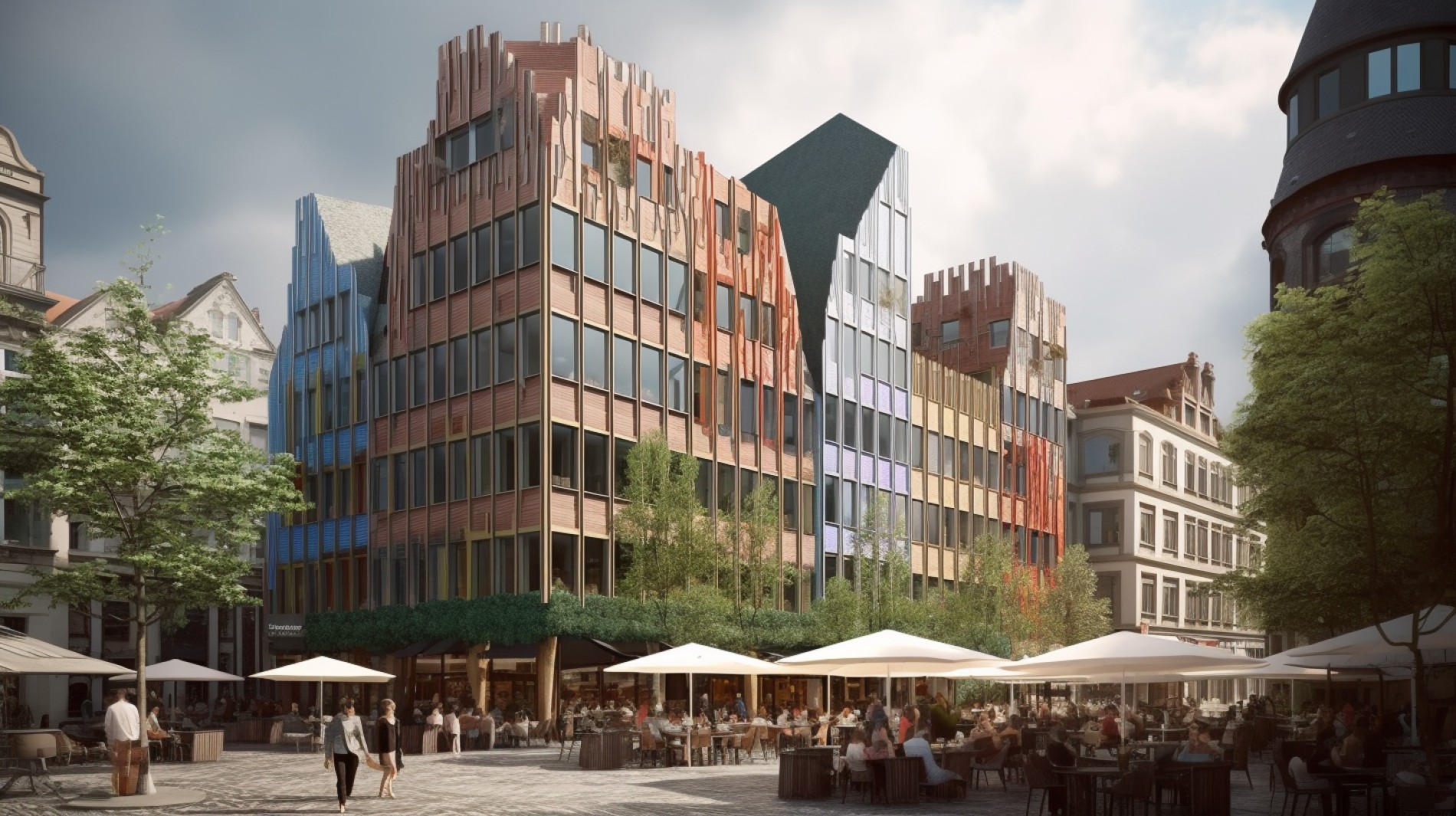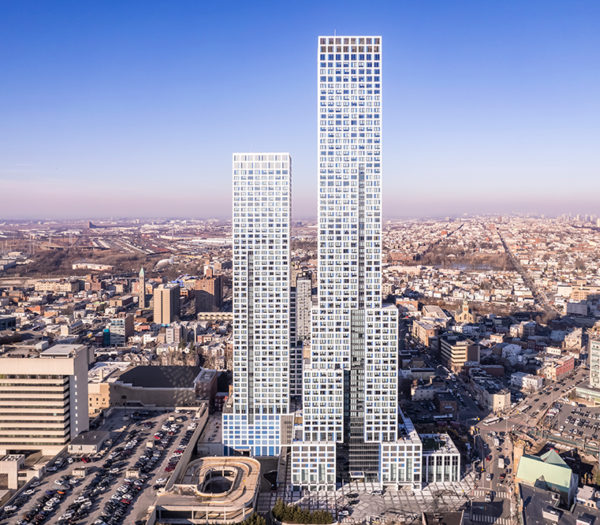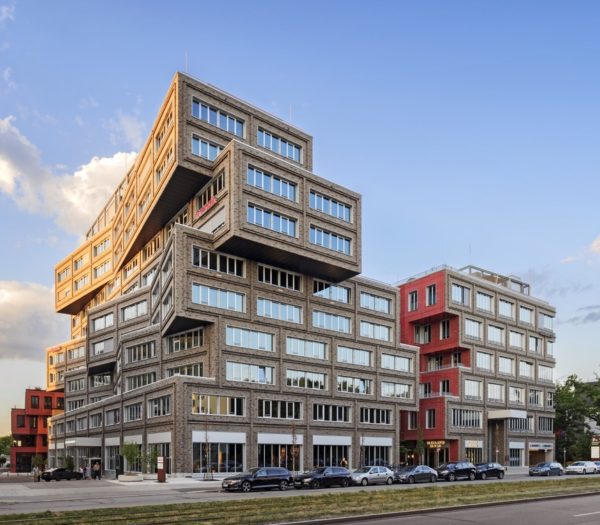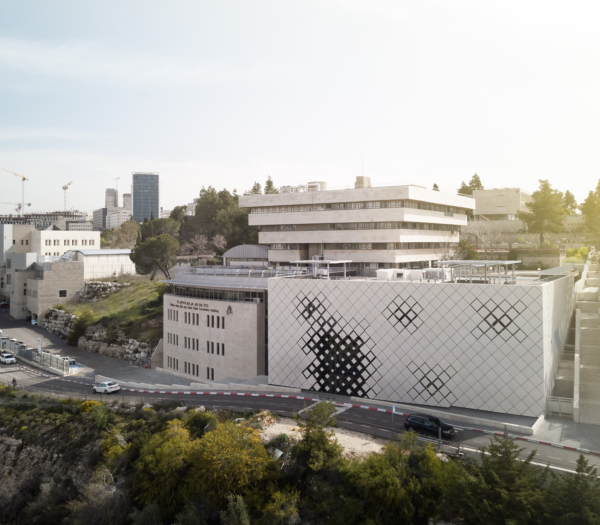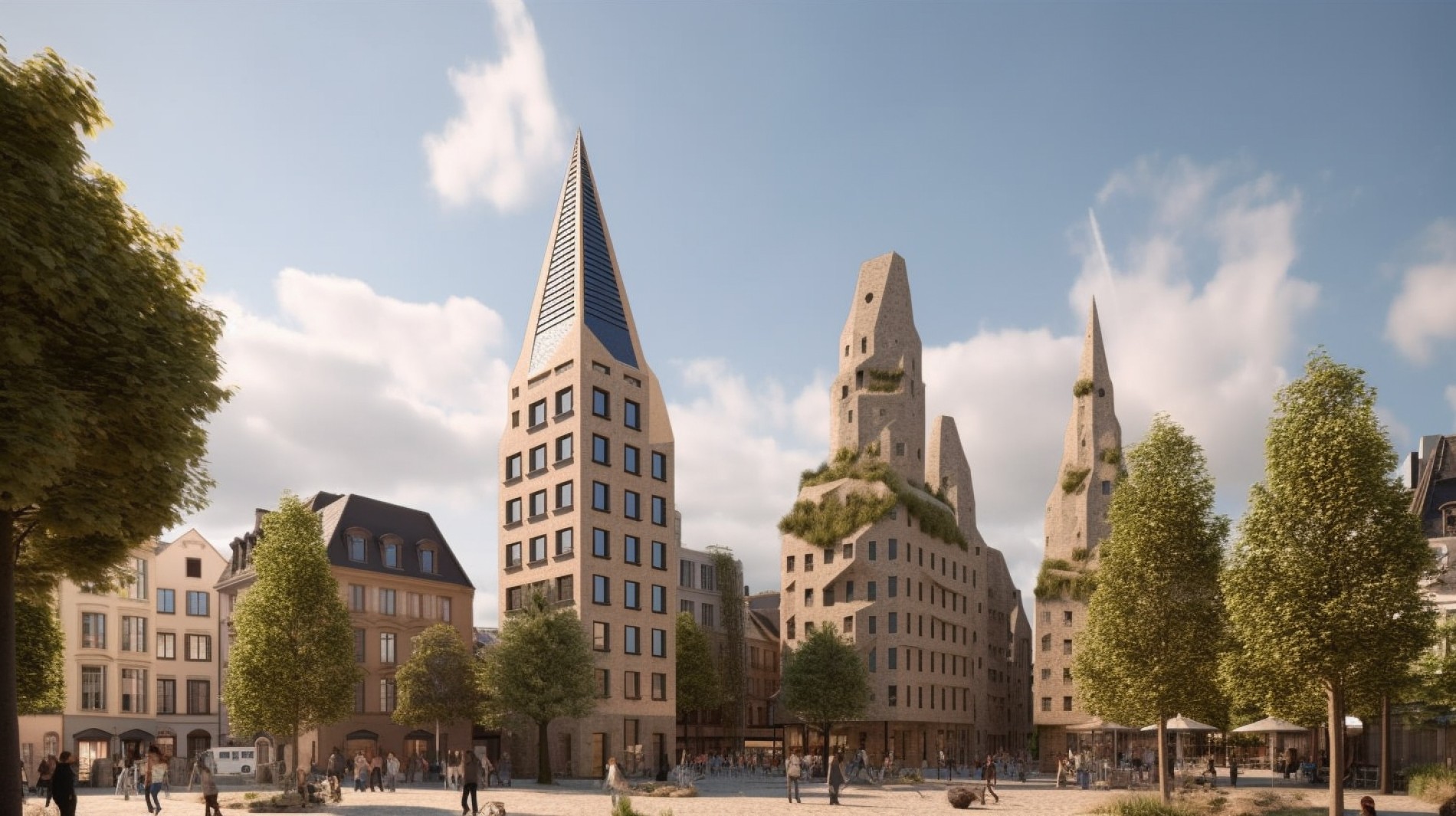
The Munich-born architect Matthias Hollwich, founder and head of HWKN, is convinced that urban planning can be improved through the interaction of humans and artificial intelligence. He sees language models and image generators as creative partners with whom even better buildings can be developed. He sees the images generated by the machines as imaginative suggestions – but which can only be transformed into real architecture through human intelligence and experience.
“We gain an enormous amount of time,” says Hollwich. A design process can be reduced from four to five weeks to three to four days. This is a big advantage, especially when planning very extensive projects. Hollwich cites the master plan for 1,000 public spaces in Riyadh that HWKN developed as an example. This also included a concept for 400 playgrounds. The architects let AI provide them with ideas so that they didn’t get a one-size-fits-all design, but rather a diverse design. The first results were available in just two weeks – a speed that would not be possible with conventional planning. HWKN also uses the electronic assistants for other projects, for example to show building owners different variants of a building and to speed up decisions. Urban development projects are also in preparation.
“We can use AI to create much more awesome buildings,” says Hollwich. What is a blessing for architects can also be a curse at the same time. Because AI programs can basically be used by anyone. “I can imagine that with these tools 98 percent of architects will be unemployed,” says Hollwich. This can only be avoided if they become translators of computer-generated ideas. “Architects have to give up some of their privileges and power,” Hollwich is convinced.
